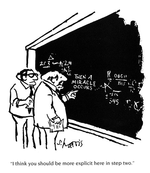Kim: Difference between revisions
No edit summary |
No edit summary |
||
| Line 16: | Line 16: | ||
<div style="padding: 10px; width: 970px; border: 5px solid #000000;"> | <div style="padding: 10px; width: 970px; border: 5px solid #000000;"> | ||
Our research spans the disciplinary boundaries between biomechanics, nanobiotechnology, and cell biology with an emphasis on their applications to tissue engineering and regenerative medicine. | Our research spans the disciplinary boundaries between biomechanics, nanobiotechnology, and cell biology with an emphasis on their applications to tissue engineering and regenerative medicine. We focuses on the development and applications of biomimetic cell culture models and tissue engineering constructs for studying the intricate interactions between mechanical and biochemical signaling in cell/tissue function and fate decisions that are essential for cancer metastasis, tissue repair and regeneration following injury, and various developmental events. Using BioMEMS and nanotechnology-based tools, for example, we are pursuing to elucidate the fundamental mechanisms of extracellular matrix (topology, rigidity, dimensionality)regulation of cell fate and function in developmental, physiological and pathological process. We would like to bridge the gap between understanding structure-function relationships at molecular and cellular levels, and being able to utilize bioinspired tissue engineering models for drug discovery, stem cell-based therapies, disease diagnostics, and medical device development. The ultimate goal of our research is to better understand complex cellular behavior in response to microenvironmental cues in normal, aging and disease states, to gain new mechanistic insights into the control of cell-tissue structure and function, and to develop multiscale regenerative technologies for improving human health. <br> | ||
</div> | </div> | ||
Revision as of 22:12, 6 September 2010
Our research spans the disciplinary boundaries between biomechanics, nanobiotechnology, and cell biology with an emphasis on their applications to tissue engineering and regenerative medicine. We focuses on the development and applications of biomimetic cell culture models and tissue engineering constructs for studying the intricate interactions between mechanical and biochemical signaling in cell/tissue function and fate decisions that are essential for cancer metastasis, tissue repair and regeneration following injury, and various developmental events. Using BioMEMS and nanotechnology-based tools, for example, we are pursuing to elucidate the fundamental mechanisms of extracellular matrix (topology, rigidity, dimensionality)regulation of cell fate and function in developmental, physiological and pathological process. We would like to bridge the gap between understanding structure-function relationships at molecular and cellular levels, and being able to utilize bioinspired tissue engineering models for drug discovery, stem cell-based therapies, disease diagnostics, and medical device development. The ultimate goal of our research is to better understand complex cellular behavior in response to microenvironmental cues in normal, aging and disease states, to gain new mechanistic insights into the control of cell-tissue structure and function, and to develop multiscale regenerative technologies for improving human health.
<html> <a href="http://www2.clustrmaps.com/counter/maps.php?url=http://www.openwetware.org/wiki/Kim" id="clustrMapsLink"><img src="http://www2.clustrmaps.com/counter/index2.php?url=http://www.openwetware.org/wiki/Kim" /> </a> </html>
